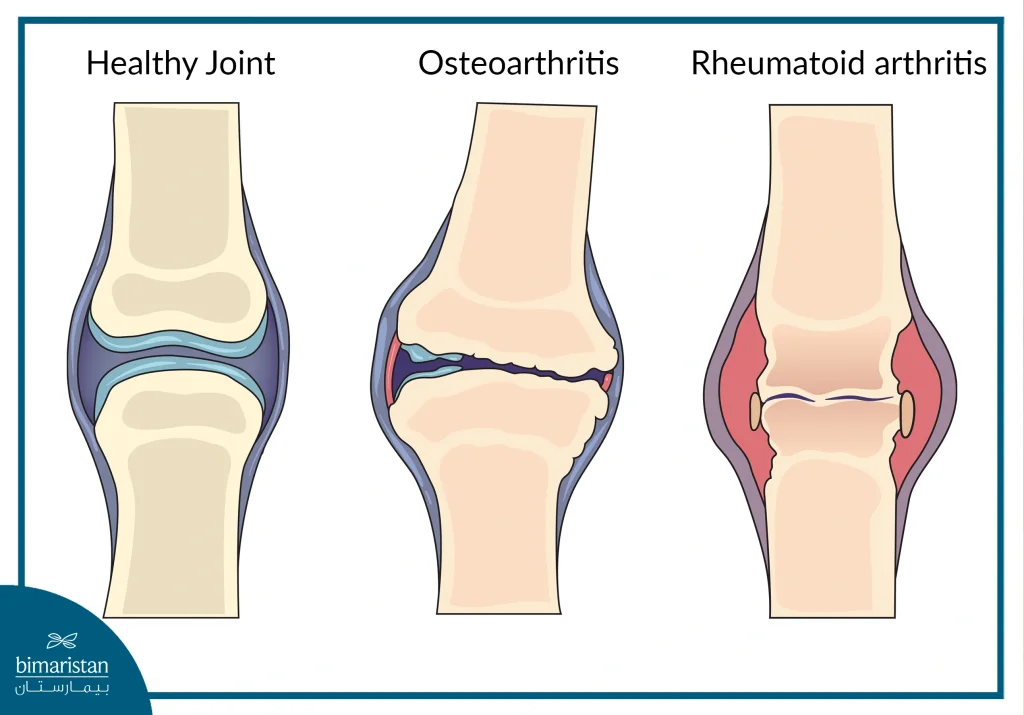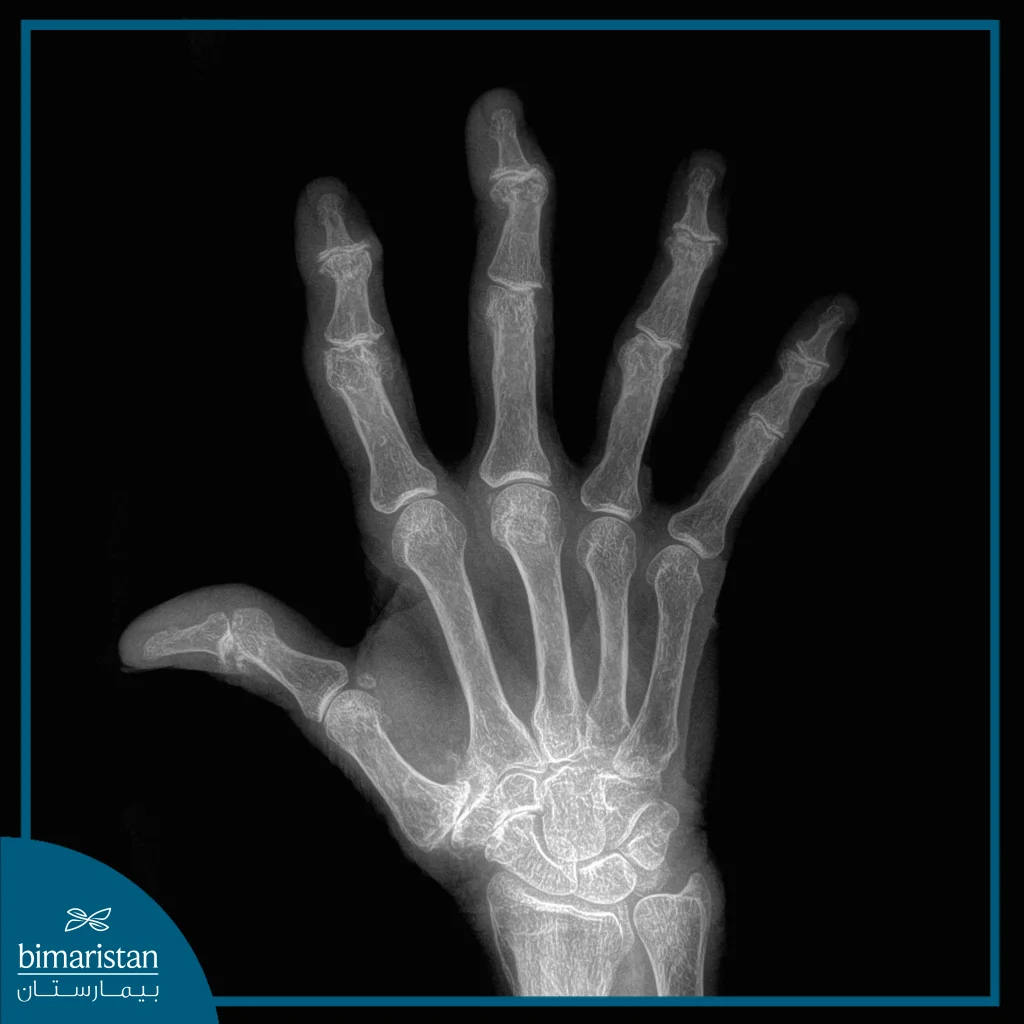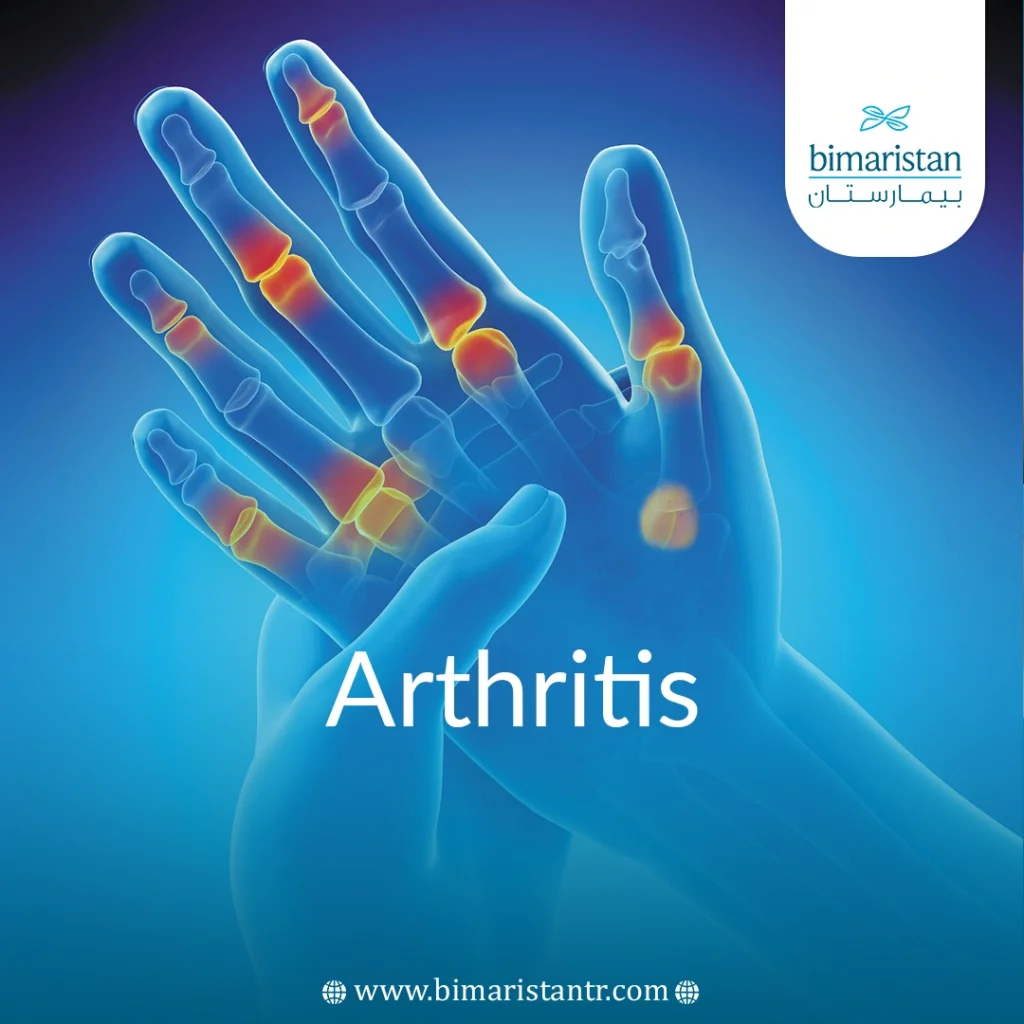Arthritis is one of the most common health conditions among older adults, significantly affecting quality of life and mobility. In 2022, diagnosed arthritis among adults was 18.9%, with women (21.5%) more likely to be affected than men (16.1%). The rate also increased significantly in the elderly aged 75 years or older, reaching 53.2%. With increasing incidence rates, understanding the causes, symptoms, and treatments of arthritis is essential to maintaining joint health and improving quality of life.
What is arthritis?
Arthritis is not just one disease; the term refers to joint pain or joint disease caused by more than 100 types of arthritis and related conditions.
Arthritis can cause permanent and irreversible changes in the joints. Although these changes may be visible, the damage can often only be seen on X-rays. Some types of arthritis affect the heart, eyes, lungs, kidneys, and skin.
Types of arthritis
There are several types of arthritis. Common types include the following:
- Ankylosing spondylitis: A type of arthritis that causes inflammation in the joints and ligaments of the spine.
- Gout: A type of arthritis that occurs in flare-ups, usually in the big toe or a lower limb.
- Pediatric idiopathic arthritis: This is the most common type of chronic arthritis in children.
- Osteoarthritis: This is the most common type of arthritis and is more common in older people.
- Psoriatic arthritis: Occurs in patients with psoriasis (red and white scaly patches on the skin).
- Infection-induced arthritis: Caused by bacteria in the body, symptoms often go away on their own within a few weeks or months.
- Rheumatoid arthritis: A form of autoimmune arthritis in which the immune system attacks healthy joint tissue.

What are the symptoms of arthritis?
Symptoms of arthritis vary because different types of arthritis can affect different joints throughout the body and exhibit symptoms unique to that joint. However, the most common joints affected by arthritis are the knees, hips, and hands. Here are the common arthritis symptoms that most patients experience:
- Swelling and inflammation
- Pain and joint stiffness
- Impaired motor performance and reduced motor capacity of the joint
- stiffness of the joint
- Skin discoloration
- Tactile sensitivity or pain around the joint
- A feeling of heat or warmth near the affected joints
Where symptoms appear depends on the type of inflammation and the joints it affects.
What is the risk of arthritis?
Arthritis is a disease that can significantly affect a person’s health and daily life if not treated properly. The severity of the disease varies depending on its type and progression. It can limit a person’s ability to perform daily activities such as walking, sitting, and sleeping. Over time, the disease may destroy the cartilage that protects the joint, affecting its mobility and flexibility. In advanced cases, it can lead to physical disability, resulting in the need for surgical intervention such as joint replacement.
Arthritis can affect psychological well-being, with some suffering from anxiety and depression due to chronic pain and difficulty moving. Weak joints also increase the risk of injuries and fractures when you fall. In some types of arthritis, such as rheumatoid arthritis, the inflammation can spread to affect other organs in the body, such as the heart, lungs, and eyes, further complicating the condition. Therefore, arthritis must be treated appropriately to maintain joint health and improve quality of life.
What is the cause of arthritis?
The causes of the disease vary depending on the type of disease the patient is suffering from:
- Osteoarthritis occurs naturally with age, as the constant use of a joint throughout life wears down its cartilage
- You may develop gout if you have hyperuricemia
- The immune system can attack the joints and cause inflammation and degeneration, as in rheumatoid arthritis
- Some viral infections (including COVID-19) can lead to viral inflammation of the joints
- Sometimes arthritis can occur for no reason, which doctors call idiopathic arthritis
What are the risk factors?
Anyone can develop arthritis in their joints, but certain factors may make a patient more susceptible, including:
- Feminine gender: Females have a 3% higher incidence than males.
- Aging: Aging increases the chance of joint wear and tear, erosion, and inflammation.
- Use of tobacco: Smoking and using other tobacco products increases your risk.
- Family history: People whose family members have inflammation are more likely to develop it.
- Activity level: People with low physical activity levels have a higher incidence.
- Some sports: Especially those that require constant physical contact.
- Some professions: Especially those that require continuous standing and pressure on the joints.
- Other health conditions: An autoimmune disease, obesity, or any condition that affects the joints may increase the chances of injury.
At what age does arthritis begin?
Arthritis can develop at any age, and the onset time depends on its type and causes. In general, osteoarthritis is more common in adults over 50, while rheumatoid arthritis often begins between 30 and 60.
The age of onset for the other types varies depending on the immediate cause. For example, traumatic arthritis occurs only after a joint injury, while gout develops after prolonged high levels of uric acid in the body.
Bimarestan’s experts advise monitoring the potential risks of arthritis, monitoring any joint changes, and talking to specialists to learn when to take preventive and therapeutic measures.
How is arthritis diagnosed?
If you are experiencing symptoms suggestive of arthritis, Bimarestan’s experts will assess your condition by asking questions about your medical history and performing a thorough physical examination. During the exam, doctors may notice signs such as:
- Fluid buildup around the joint.
- Warmth, redness, and increased sensitivity of the joints.
- Difficulty moving the joint is known as a “limited range of motion.”
In addition, Bimarestan doctors may recommend blood tests and X-rays to detect infections or other possible causes. In some cases, a sample of joint fluid may be withdrawn with a needle and sent to a lab for analysis, which can help determine an accurate diagnosis and develop an appropriate treatment plan.

Arthritis treatment methods
There is no definitive cure for arthritis, but we can help you find the right treatments to manage your symptoms and minimize the disease’s impact on your daily life. The type of treatment depends on the cause, type of inflammation, and joints affected.
Common treatments for arthritis
- Analgesic and anti-inflammatory medications: Such as non-steroidal anti-inflammatory drugs or acetaminophen.
- Corticosteroids: Either as oral medications or in the form of cortisone injections to reduce inflammation.
- Disease-modifying antirheumatic drugs (DMARDs): These are used in cases of rheumatoid arthritis or psoriatic arthritis.
- Physical and occupational therapy: To improve motor strength, increase range of motion, and promote confidence in movement.
- Surgical intervention: It is used when nonsurgical treatments fail to relieve symptoms.
Surgery to treat arthritis
In advanced cases, surgical intervention may be necessary, and the most common surgeries include:
- Joint fusion surgery (arthrodesis): Surgically fusing the bones, often used in the spine or ankle.
- Joint replacement: If the joint is severely damaged or has lost bone, the natural joint is replaced with an artificial one, wholly or partially.
The specialists at Bimarestan will explain whether you need surgery and which type is right for you, as well as what to expect during your recovery period.
How to prevent arthritis
You can minimize your risk of infection or delay its progression by following effective prevention methods. Prevention involves different approaches depending on the type and cause of the infection, including
- Osteoporosis: Maintain a healthy weight.
- Rheumatoid arthritis: The most important thing is to stay away from smoking.
- Gout: Eat a healthy, low-sugar diet and abstain from alcohol.
- Avoid sports injuries: Having the right equipment, adequate training, and safe play is essential.
Since doctors do not fully understand the causes or mechanisms behind these diseases, proper prevention may not be possible. However, there is great hope for effective methods of preventing arthritis and related conditions.
Sources:



